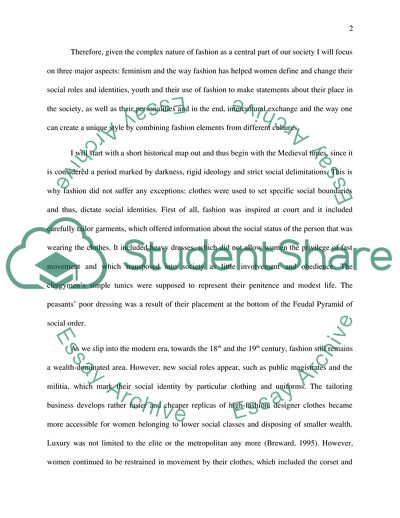Cite this document
(How Are Fashion and Appearance Central to the Construction of Social Term Paper - 2, n.d.)
How Are Fashion and Appearance Central to the Construction of Social Term Paper - 2. https://studentshare.org/social-science/1749639-how-are-fashion-and-appearance-central-to-the-construction-of-social-identities-discuss-with-reference-to-specific-examples
How Are Fashion and Appearance Central to the Construction of Social Term Paper - 2. https://studentshare.org/social-science/1749639-how-are-fashion-and-appearance-central-to-the-construction-of-social-identities-discuss-with-reference-to-specific-examples
(How Are Fashion and Appearance Central to the Construction of Social Term Paper - 2)
How Are Fashion and Appearance Central to the Construction of Social Term Paper - 2. https://studentshare.org/social-science/1749639-how-are-fashion-and-appearance-central-to-the-construction-of-social-identities-discuss-with-reference-to-specific-examples.
How Are Fashion and Appearance Central to the Construction of Social Term Paper - 2. https://studentshare.org/social-science/1749639-how-are-fashion-and-appearance-central-to-the-construction-of-social-identities-discuss-with-reference-to-specific-examples.
“How Are Fashion and Appearance Central to the Construction of Social Term Paper - 2”. https://studentshare.org/social-science/1749639-how-are-fashion-and-appearance-central-to-the-construction-of-social-identities-discuss-with-reference-to-specific-examples.


